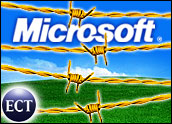
Cisco Systems released a new data center switching technology designed to make it easier for IT network managers to create a centralized data storage center.
The Cisco Nexus 7000 Series is part of Cisco’s Data Center 3.0 vision, which reverses the previous client-server side architecture that many data centers were using. The move comes in response to the rising costs and complex network management issues that arose with these distributed networks.
The Nexus series uses the Cisco Nexus Operating System (NX-OS) to help IT managers better consolidate the disparate software systems running their networks. The platform can currently transfer 15 terabits per second, which means users could download the entire Netflix library in roughly one minute, with a scalable architecture that could allow even greater delivery rates.
The platform uses the recently deployed Cisco Trusted Security architecture, which allows network managers to segment traffic through virtualized environments.
“With its Data Center 3.0 vision, Cisco is transforming the data center into a virtualized environment that revolutionizes how organizations adopt new IT strategies and respond quickly to changing business needs,” said Jayshree Ullal, senior vice president of Cisco’s Data Center, Switching and Services Group.
The Data Center
At the heart of Data Center 3.0 is an acknowledgment by the computing industry that distributed computing, while powerful, isn’t alone the most cost- and labor-intensive solution at the moment.
Instead, the new data centers will look suspiciously like they did in the 1960s, when they were centralized in one place because of issues such as management cost, power consumption and cooling issues, said Ashish Moondra, product manager with Avocent, a Huntsville, Ala., infrastructure management hardware solutions provider for data centers
Cisco’s new architectures would enable a company to re-consolidate its disparate data and storage equipment — many of which run on competing operating systems — into one central location.
“One of the challenges you have when you try to bring these disparate pieces of equipment back together is how do you consolidate all of it so it works together,” Moondra told TechNewsWorld. “This new system brings that all together in a much better way than it has been before.”
The fast data transfer rates should enable IT managers to more quickly monitor, fix and back up their networks without end users facing significant lag or slowdowns, Moondra said.
Virtual Management
The architecture may look surprisingly like the sixties, but Cisco’s use of virtualization gives network management a decidedly modern feel. While the centralized data center will have more equipment in one place, managing the data on that network will happen virtually.
On a very basic level, simply monitoring the power and cooling capabilities could take substantial time without virtualization, said David Cottingham, global practice manager for Dimension Data’s Data Center & Storage, a Johannesburg, South Africa-based company that helps businesses conceive and implement its storage infrastructure.
However, the information stored in the data center will be fluid. IT managers — whether they are located on site or halfway around the world — can easily move or re-route assets to different parts of the network.
This is particularly helpful for productivity and cost management, but may be more important for disaster recovery, which can now be done much more easily with distributed data.
“Once you have that data on the network, you have the flexibility to move that infrastructure anywhere you want on the network,” Cottingham told TechNewsWorld. “The data is still distributed, and it becomes about getting the right assets on the right network at the right time.”





















































